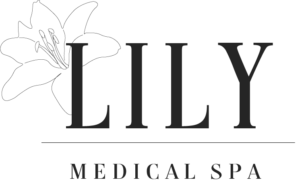Introduction
Oxygen therapy is a fundamental intervention in emergency medicine, providing crucial support to patients experiencing respiratory distress or compromised oxygenation. Rapid and appropriate administration of oxygen can be life-saving, addressing a wide range of emergency medicine and ensuring patients receive the oxygen they need to survive and recover.
Immediate Oxygenation
In emergency situations, ensuring adequate oxygenation is paramount. Oxygen therapy is often the first step in stabilizing patients who are struggling to breathe or are experiencing oxygen deprivation. By rapidly increasing oxygen levels, healthcare providers help prevent further deterioration and buy time for more comprehensive assessments and treatments.
Respiratory Distress and Failure
Patients with respiratory distress or failure, whether due to trauma, asthma, pneumonia, or other causes, require immediate oxygen therapy to alleviate their symptoms and improve oxygen levels. High-flow oxygen is administered to ensure that sufficient oxygen is delivered to the bloodstream and tissues.
Cardiac Arrest and Resuscitation
During cardiac arrest, effective oxygenation is essential for maintaining vital organ function. Oxygen therapy is provided as part of cardiopulmonary resuscitation (CPR), aiding in the delivery of oxygen to the brain and other organs. It supports the body’s ability to generate energy and increases the chances of successful resuscitation.
Carbon Monoxide Poisoning
Carbon monoxide (CO) poisoning is a life-threatening condition that requires prompt treatment. Oxygen therapy is used to displace CO molecules from hemoglobin and restore the blood’s oxygen-carrying capacity. Administering high-flow oxygen accelerates CO elimination, preventing severe complications and saving lives.
Shock and Trauma
Patients in shock or with traumatic injuries often experience reduced tissue oxygenation. Oxygen therapy helps stabilize these patients by increasing oxygen levels and supporting tissue perfusion. This is critical in preventing organ failure and improving overall outcomes.
Stroke Management
During strokes, brain tissue may become deprived of oxygen due to reduced blood flow. Oxygen therapy is used to improve brain oxygenation, potentially reducing the extent of brain damage and improving the patient’s prognosis.
Anaphylaxis and Allergic Reactions
Anaphylactic reactions can cause severe respiratory distress and shock. Oxygen therapy is administered to ensure patients receive the oxygen they need while other treatments, such as epinephrine, are initiated to manage the allergic response.
Patient Comfort and Anxiety Reduction
In emergency situations, patients may be frightened and anxious. Administering oxygen can help alleviate some of the distress by addressing hypoxia and providing a sense of relief. This can improve patient cooperation and facilitate other necessary interventions.
Monitoring and Adjustments
In emergency medicine, oxygen therapy is continuously monitored and adjusted based on patient response and oxygen saturation levels. Healthcare providers ensure that the appropriate oxygen flow rate is maintained to avoid both hypoxia and oxygen toxicity.
Conclusion
Oxygen therapy is a critical life-saving intervention in emergency medicine. By rapidly addressing respiratory distress, improving oxygenation, and supporting organ function, oxygen therapy plays a pivotal role in stabilizing patients and providing them with the best chance for recovery. Emergency medical professionals rely on this fundamental intervention to deliver effective care and ensure positive outcomes in high-stress, time-sensitive situations.

